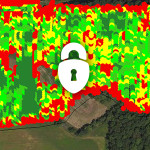2017 ASABE Meeting: Big Data is Where the Rubber Meets the Dirt
Outside of the core precision agriculture technologies, researchers have a renewed interest in the interface between in-field machine operations and soil conditions. Connecting machine data and farm data, and turning that data into actionable insights, is becoming possible thanks in part to data standards (ISOBUS) and the work of ASABE.

2017 ASABE Meeting: Big Data is Where the Rubber Meets the Dirt
Outside of the core precision agriculture technologies, researchers have a renewed interest in the interface between in-field machine operations and soil conditions. Connecting machine data and farm data, and turning that data into actionable insights, is becoming possible thanks in part to data standards (ISOBUS) and the work of ASABE.The sheer volume and variety of precision agriculture research being conducted across the globe can be overwhelming. This research was recently on display as part of the American Society of Agricultural and Biological Engineers (ASABE) Annual International Meeting in Spokane, Washington.
In addition to committees and standards development, there are technical sessions in which current research is presented. Some of the work featured AGCO equipment, such as one study comparing blended fertilizer against discrete fertilizers applied from multi-bin systems. The study found virtually no difference between the application methods, which opens some interesting doors for variable-rate prescription development which can target individual fertilizer components (N, P, K) or possibly micronutrients separately.
Outside of the core precision agriculture technologies, like variable-rate, researchers have a renewed interest in the interface between in-field machine operations and soil conditions. Compaction detection and management are becoming common phrases as researchers describe the effects of larger machine size and non-production traffic in a field. As machines have gotten larger, they have gotten smarter – which allows data collected from the machine to describe these field conditions. Data typically reserved for describing machine performance is being applied to describe in-field conditions. Draft loads on three-point-hitch implements can be described using standard ISOBUS messages. Engine load, ground speed, and fuel consumption can all provide insight between the machine and how it is being used in the field.
These trends create important opportunities for AGCO to connect the data already being created on the machine to their applications. This data can become actionable for growers as another data layer which can describe their field and the conditions to which their crop is exposed.
This research identifies opportunities, but it also reveals one of precision agriculture’s greatest challenges. We are very good at generating data, but are still developing strategies to make it actionable and valuable. I believe, however, that AGCO is particularly suited to this challenge and can drive it’s deep understanding of their machines to new and valuable data sources for producers and commercial partners to utilize in their operations.
On a personal note, the outgoing President of the Society was AGCO’s own Maynard Herron. We were very well represented by his time in office and I applaud AGCO for their continued support of ASABE.
Written by Jason Ward
Jason is the Global Training Manager for Fuse, AGCO’s next-generation approach to precision agriculture. Visit www.AGCOcorp.com/Fuse to learn more. Connect with Jason on Twitter @jkward.



